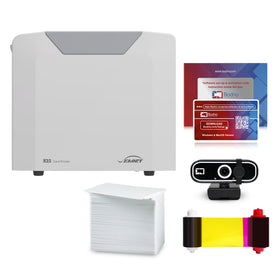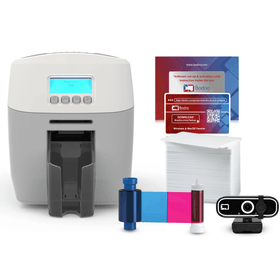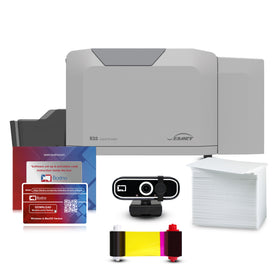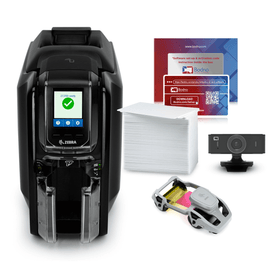
Dye-sublimation printing gives you photo-quality output for your ID cards. In other words, you will get high-quality prints with more accurate colors and no jagged edges when you use ID card printers that work on the dye-sublimation printing technology.
How Dye-Sublimation Printing Works
A dye-sublimation ID card printer will heat the dye as well as the blank PVC or PET card fed into the system. This ensures that the gaseous dye penetrates the card surface perfectly. By the time the ID card cools, the dye will have chemically bonded with the plastic card.
To deliver photo-quality results, dye-sublimation ID card printers diffuse cyan, yellow, and magenta colors in a variety of proportions onto the card surface based on the amount of heat applied by the printhead. For instance, when you are printing a color photo of an employee on the ID card, the dye-sublimation printer will infuse one color onto the card surface using heat and the next color will be applied only after the first color is infused sufficiently.
As the CMY dyes can combine to create any desired color in the spectrum, the diffusion technology gives a better depth of color when full-color photo ID cards are printed. After the colors fully saturate, the black texts are printed onto the ID card. However, in order to make them infrared readable, a special section with black resin is used on the dye-sublimation ribbon. This works to create infrared readable barcodes and any other important data.
After the printing is done, an overcoat layer is applied onto the card surface to protect the prints and to ensure its longer life. The protective film also helps to avoid UV damage and fading of the ID cards.
Why Use Dye-Sublimation Printers
Dye-sublimation printers give you better results by mixing the primary dyes perfectly to get the exact color. Other printing technologies employ a series of colored dots to give you the required output. These dots look like a color from a distance but may appear grainy and different colors when you check them up close. In fact, it will take a 1200dpi ID card printer to get the same color depth and resolution that you can get in a 300dpi dye-sublimation ID card printer.
As the colors are diffused onto the card surface in dye-sublimation printing, the edges of each pixel are blurred. This gives you an impression of blending the colors on the card. On the other hand, printing color dots will leave white gaps between pixels, which make it appear grainy. Besides, as the colors are diffused directly on the card instead of just painting the surface, it gives you more lasting results.
Check out more of our printers on Bodno here.
Interested in an Evolis printer? Check out the Evolis Primacy here.













 Software
Software Upgrades
Upgrades Support Plans
Support Plans Self Serve
Self Serve Printer Setup
Printer Setup



